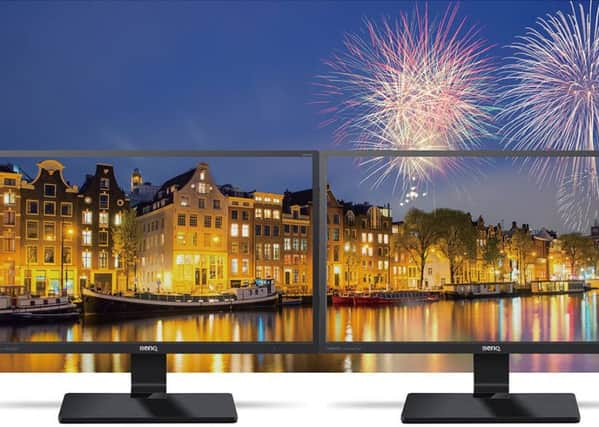How to empty your loft and double your desktop


Most of this stuff is junk now, but occasionally it’s possible to put a bit of old hardware back to work, to effect an upgrade to your current kit at little or no cost.
If you still have a desktop PC at all, there is a good chance that is it installed as part of a home office, and if there’s one thing that makes working at home easier, it’s more desk space. So, if the physical space on your desk permits, why not haul down an old monitor and extend your virtual workspace?
Advertisement
Hide AdAdvertisement
Hide AdAny screen made within the last 15 or so years will be of the modern flat panel variety, and if there is one of those going spare somewhere in your house it will very likely work with your modern PC.
Most computers have two or more video ports – the sockets into which the monitor cables are plugged – and all but the most basic are capable of sending an image to dual screens. This does not mean seeing the same picture on both, but doubling the width of your Windows desktop so that when you move the mouse off the side off one monitor, it continues on to the other one.
Check around the back of your machine and see what is already plugged in. Monitor connections come in four flavours: Displayport, DVI, HDMI and the older, analogue VGA type, and all you need to do is match the socket on the monitor you plan to use with a spare one on your PC.
There is, as always where PCs are concerned, a complication, because if your computer has a graphics card installed, it will have its own set of monitor connectors – so be sure to plug your second monitor into a socket directly next to the one your primary screen is using.
Advertisement
Hide AdAdvertisement
Hide AdIf you’re lucky, you should see a picture on both screens as soon as you turn the computer back on. But the second will be by default a duplicate of the first, so you’ll need to tinker beneath the bonnet of Microsoft’s notoriously labyrinthine control panel to configure it to your liking.
On most versions of Windows, it is possible to access the necessary settings by right-clicking on an empty part of the desktop and choosing Graphics Properties from the menu. This will bring up a set of options specific to your graphics card, but somewhere among them should be one called Multiple Displays. If all is well, the system should “see” second screen and give you the option to extend your desktop onto it. In the event that the second monitor isn’t listed, it may be a sign that your machine can handle only one at a time.
The monitor itself may be of a different size and resolution to your main one. This isn’t a problem technically but it you find it hard on your eyes, you could always add to your future junk mountain by investing in a new one that’s a better match. A 21 or 23-inch screen can be had for a little over £70 if you shop around, and as it will be your secondary display you don’t have to bother with bells and whistles like built-in speakers. Just make sure its has a connector that matches your spare socket.